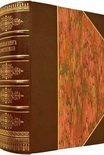Modus Operandi, Mauro Corvasce [love letters to the dead .TXT] 📗

- Author: Mauro Corvasce
Book online «Modus Operandi, Mauro Corvasce [love letters to the dead .TXT] 📗». Author Mauro Corvasce
The victim's body will contain both cut and stab wounds and the blood splatter will not be consistent with the suspect's story. The blood splatter will be consistent with defensive behavior such as fleeing from room to room and there will be blood pooling where the victim has stopped to defend himself.
Example 3: A middle-aged fellow is walking home from work and, prior to arriving home, he is stopped and robbed by the neighborhood gang at knife point. Our victim, having been robbed numerous times in the past, decides he is going to fight back. The victim is found the next morning with a single stab wound to the chest. Little or no blood will be observed at the scene. Most of the victim's bleeding will be internal, leaving small blood staining around the wound on the victim's clothing.
Example 4: A young woman is walking to her vehicle after leaving work one night. The suspect grabs her from behind, places a large knife to her throat, and demands that she obey his requests. The victim is then taken to a waiting van where she is forced to lie on her stomach while her hands are secured behind her with duct tape. The victim's eyes and mouth are also covered with duct tape to prevent her from calling for assistance and seeing the suspect. The victim's body will show bruises caused by rough treatment at the hands of the suspect. The victim will show signs of sexual assault and will receive from one to multiple stab wounds depending on the psychological motivation of her attacker.
Death by Gunshot
Before we get into some examples, let's take a moment to discuss the different types of weapons and wounds that one will find. The so-called small arms are basically weapons that can be carried easily and comfortably by one person. They include machine guns, submachine guns, handguns, shotguns and rifles. We have, on occasion, observed cases involving cross bows and long bows. In most cases involving a bow and arrow, the person using these weapons has a hunting background, and these weapons are readily at hand.
Handguns come in many forms from the very simple to the very complex. Zip guns are homemade single shot pistols usually carried by gang members and guerrilla fighters. Only one round of ammunition can be inserted and fired.
Derringers and Saturday Night Specials are small, cheaply-made handguns. Most Derringers contain chambers for two rounds and can only be fired one at a time. The Saturday Night Specials are knock offs of more expensive revolvers.
Revolvers, or wheel guns, are pistols with a two- to twelve-inch barrel. The rounds are inserted into the wheeled chamber, which can hold from five to eight rounds. The shell casings will remain inside the chamber until they are physically ejected.
The auto-loading pistols, which are also called semiautomatic handguns, use a magazine to contain the rounds. The magazine is placed into the pistol grip, and shells are fed into the cylinder by the action of the slide. After firing, the shell casing is ejected from the weapon.
For those of you who are unfamiliar with the make up of a round, it contains four components:
1. Bullet
2. Shell casing
3. Powder
4. Primer.
The bullet, or projectile, is the portion that leaves the barrel of the weapon. The shell casing holds the powder, a flammable propellant similar to black powder, and the bullet. The final component is the primer, which rests at the base of the round. When struck by the weapon's firing pin, it creates an ignition source for the powder, which ignites and turns into gases that force the bullet out of the shell casing and down the barrel of the weapon.
The basic sizes of ammunition used for semi-automatic handguns are (starting from the smallest): .22 caliber, .25 caliber, .32 caliber, .380 caliber, 9mm, .40 caliber, 10mm and .45 caliber. Other handgun calibers used primarily for revolvers are: .38 caliber, .357 caliber, .41 caliber and .44 caliber. Caliber refers to the diameter of the muzzle, or opening, of a gun's barrel and is measured either in hundredths or thousandths of an inch or in millimeters.
Handguns are popular weapons because they are easy to conceal. Because they are so popular, we are going to concentrate on them.
The bullet creates a number of different injuries referred to as gunshot wounds. These wounds are classified into four categories, based on the distance from the muzzle of the weapon to the victim at the time of injury:
1. The contact wound, occurs when the muzzle of the gun is placed directly against the victim's body.
2. The near contact wound when the muzzle of the gun does not come in physical contact with the victim's body but is only a short distance away (one to three inches).
3. The intermediate gunshot wound occurs when the muzzle of the gun is six to eight inches away from the victim but close enough to have the victim burnt by the gunpowder. This burning is also known as powder tattooing. Powder tattoos can be found on the clothing or skin of the victim.
4. The distant wound occurs when the muzzle of the gun is more than fifteen to eighteen inches from the victim and no injury other than the bullet passing through the skin is apparent.
When investigating gunshot wounds, the official will take into consideration the size or caliber of the weapon. Basically, the smaller the weapon, the closer the weapon needs to be for powder tattooing. When examining the body, the official will also look for the direction or path of the bullet. This is determined through a number of observations and can





Comments (0)